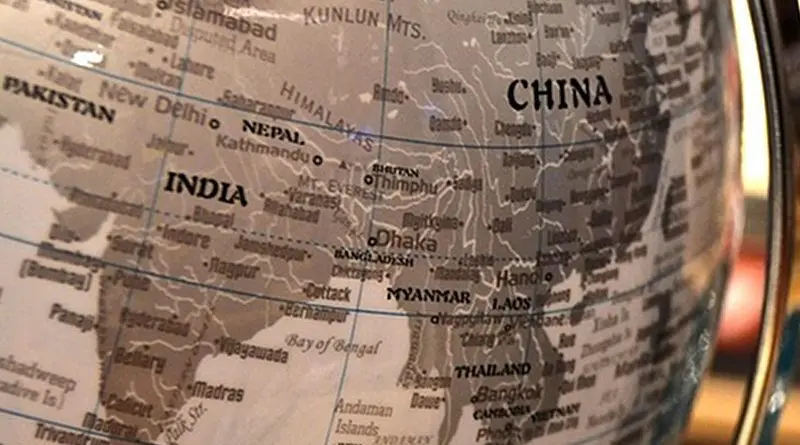South Asian Nuclear Muddle – OpEd
By Rabia Javed*
Indeed, the origin of nuclear episode in South Asia occurred when India detonated its first plutonium device characterizing it as a “peaceful nuclear explosive”. While scratching around some pages from the history, one comes to the conclusion that the nuclear arms race in South Asia is intensifying, thanks, amply, to New Delhi’s designs to be a hegemonic regional power. Over the past decade, South Asia has increasingly become alarmed by Indian ability to wage conventional war and their ambitious nuclear weapon capabilities are also a threat to peace.
According to a report published by financial times titled “India raise nuclear stakes” re-counted that India can now build nuclear weapons with the same destructive power as those in the arsenals of the world’s major nuclear powers according to New Delhi’s senior atomic officials.
Similarly, a statement published in The Hindu by Indian Atomic Energy Chairman R.K. Sinha mentioned, “India will continue its nuclear programme without any interruption, irrespective of decisions taken by other countries and there is no reason to follow Germany, Japan which are cutting down on nuclear energy.” Has the international community accepted India as a determined proliferator which can’t be stopped?
Similarly, a report shows India’s dependence on nuclear weapons is increasing miles after every passing year and will be devastating in near future. Some newspapers also published this report with a label of China being a sole reason for such development. However, Zachary Keck once argued that India’s nuclear development was just a mistake to be remembered because it has not served the purpose of what India has aimed for (deterring China).
India has long sought to carve out a special exception for itself in the nuclear sphere. Brig. Naeem Salik in his book titled, The Genesis of South Asian Nuclear Deterrence: Pakistan’s Perspective, traces the origin of India’s nuclear programme and the aspects of its nuclear double standards. He provides a comparative study of the dynamics of the South Asian nuclearization which concludes that Prime Minister Jawaharlal Nehru and father of the Indian bomb, Dr. Homi Bhabha recognized the dual nature of nuclear technology, and believed it could be beneficial for India.
During New Delhi’s early period in nuclear history, it achieved nuclear technology to utilize it for peaceful purposes but the demonstration in 1974 evoked a totally different situation. Isn’t it a mischief that India tested its first nuclear device in May 1974 and now has full capabilities of nuclear fuel cycle under the cover of civilian nuclear technology? How did this come to pass when there were strict safeguards in place to prevent misuse of the peaceful atom? The further depressing dilemma is that India’s nuclear programme is moving forward, steadily, without any hindrance from great powers. It secretly pursued nuclear weapons, declared in the late 1990s, whereas, the International community engaged with New Delhi, constantly extending a hand of friendship exemplified by different diplomatic measures such as the Indo-U.S. nuclear deal.
That being said, New Delhi continues to sign nuclear deals without being hindered by any of the so-called nuclear non-proliferation purists. Despite not signing the Non-Proliferation Treaty, India has also assigned the uranium deal with Australia which has raised various important questions regarding the use of Australian uranium in India. As of now, India has signed civil nuclear agreements with more than a dozen countries which include; Argentina, Australia, Canada, Czech Republic, France, Japan, Kazakhstan, Mongolia, Namibia, Russia, South Korea, the United Kingdom, the United States and Vietnam. Has India succeeded enough to bury her proliferation record over decades and shove it under the carpet? Isn’t it a lethal hoax?
Under these circumstances, it is also astonishing that there is even a possibility to grant India, the membership of Nuclear Supply Group (NSG), which is, in turn, a reactionary measure to India’s own disconcerting pursuit of nuclear weapons. Interestingly, India has been building its case for international recognition as a (Normal) nuclear weapon state for years, seeking admission to the Group, where, permitting an NPT-outlier like India will create the domino effect, when it will become a compulsion for states like Pakistan to opt for strategies commanded by their security concerns. While, on the other hand, it was also revealed that India has been busy in developing a secret nuclear city. Henceforth, it is important for NSG to abide by the criteria established by their own policies and must consider that its decision will also affect strategic stability in the region of South Asia.
As the world seeks to shrink global stockpiles of nuclear weapons, India continues to modernise its arsenal which increases Pakistan’s security dilemmas, compelling it to give a befitting yet restrained response. North Korean and Iranian nuclear programmes must not be the only concern, the concern should be regarding the rate of proliferation everywhere. Nuclear sales may benefit the corporate bottom-line, however, the spread of nuclear technology and ultimately nuclear weapons undermines the security of the planet.
Last but not the least, there is a dire need to closely scrutinize Indian procurement and export practices in defense and nuclear deal.
*Rabia Javed is a freelance writer

